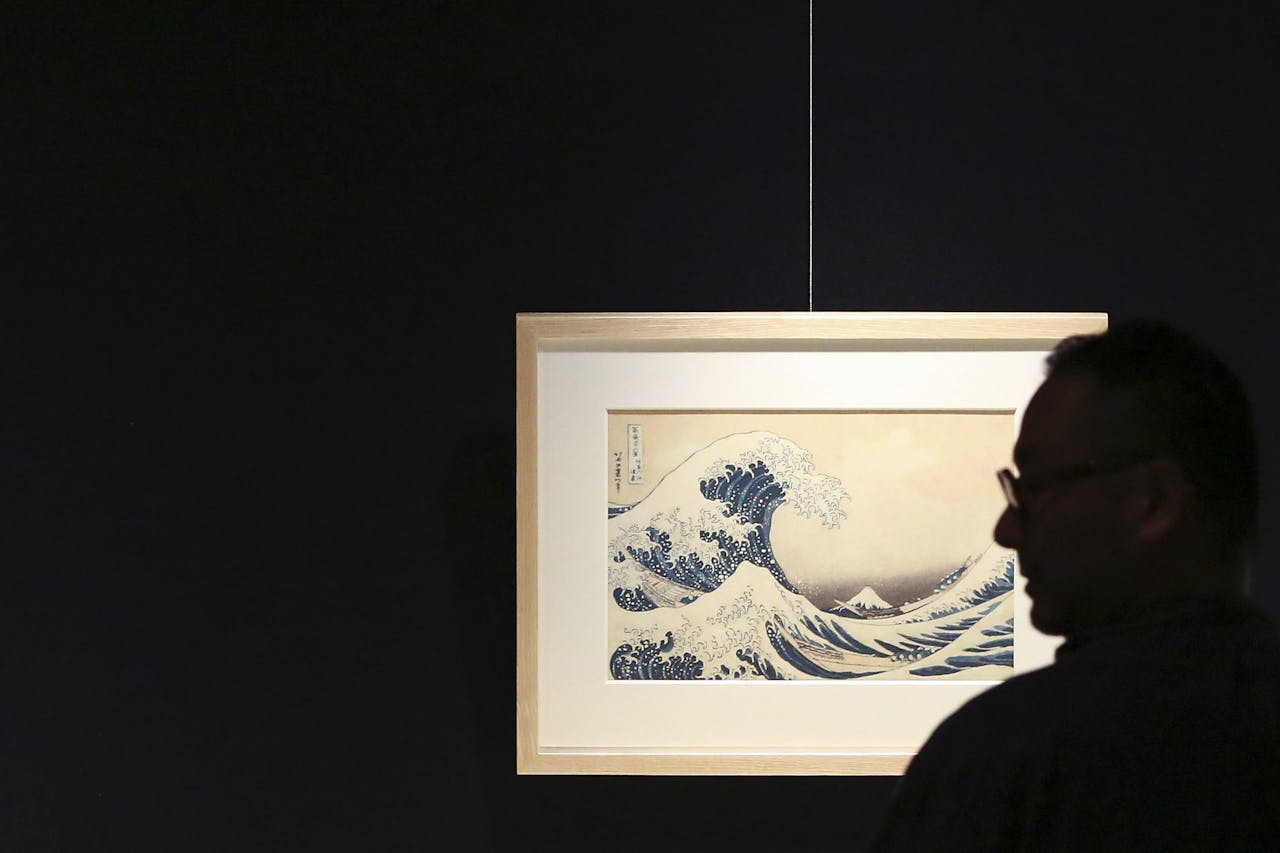
Many are familiar with “The Great Wave,” the most famous Japanese painting by the 19th century artist Katsushika Hokusai. If you look closely, you see the wave towering above huddled men rowing three wooden fishing boats.
We are all somewhat like those Japanese fishermen at the moment – ducking in the face of a gigantic wave. The wave in question is the pandemic caused by the SARS-CoV-2 virus and the deadly disease that it causes: COVID-19.
For two months now, we have been captivated by wave-like images. The first graphs showed the exponential growth of infections and deaths, then a flattening of the curve as a result of the introduction of the community 6-foot distancing and economic lockdowns.
These graphs were initially derived from epidemiological models. Now we know both the number of confirmed cases and the number of deaths. They don’t correspond 100% to the predicted curves – no model is perfect – but overall the numbers fit.
The Peak Is Behind Us
In the most heavily impacted areas in the developed world, like New York, the big wave seems to be past its peak. Looking at new cases, hospital admissions, ventilator use and deaths, the peak is now behind us. For the United States as a whole, the large wave of new cases has clearly stabilized since the first week of April.
In some European countries, especially Austria, Denmark and Germany, the situation is even more encouraging. Unlike New Yorkers, citizens of these countries are looking forward to a partial resumption of normal life within the next few days.
A number of U.S. states are already moving in the same direction. In Montana, the beautiful and sparsely populated state where I took refuge six weeks ago, churches reopened yesterday and retail outlets can largely resume business today.
So was that it then? The wave crested; most of us survived. Do we now resume life as usual? Last Wednesday, Vice President Mike Pence said, “We truly do believe as we move forward with responsibly beginning to reopen the economy in state after state around the country, that by early June we could be at a place where this coronavirus epidemic is largely in the past. Americans will be able to enjoy a good summer.”
Whoa, whoa, not so fast.
Pandemics in Waves
In the past, all major pandemics have come in waves, including the Black Death, the bubonic plague which struck in the 14th century, and the smallpox pandemic in the 18th century. The first known plague in 5th century BC Athens had three waves: the years 430, 429 and 427-426.
In some cases, the second wave was worse than the first. Take the great influenza pandemic of 1918-1919. The first outbreak was at the Camp Funston military base in Kansas in March 1918. But global mortality peaked during the second wave in October and November. The third wave in early 1919 mainly hit England, Wales and Australia. The influenza pandemic of 1957-1958 started in Hong Kong in mid-April 1957. It reached America in June, causing a wave of teenage deaths that spring. However, a second wave followed in January to March 1958. In early 1960 and early 1963, mortality rates peaked again.
Herd Immunity Is Still a Long Way Off
The main reason for expecting a second COVID-19 wave in 2020 is that we’re a long way from achieving herd immunity everywhere in the world. Even in New York, the most affected area in North America, the infection rate is only slightly above 21%, according to the latest test results. When lockdowns are relaxed and people return to work and school, it is almost unthinkable that we will not see a rise in the number of infections, illnesses and deaths. We already see this in some parts of Asia, especially in Singapore and northern China.
The only real discussion is to what extent warmer weather may curb infections in the Northern Hemisphere. I have reviewed the academic studies on this subject and am still not convinced. We are told that this virus spreads more quickly indoors and in confined spaces like subways, restaurants and hospitals. That’s why closing parks and beaches was pretty useless and probably harmful, if you look at it realistically. So it’s possible that summer will not radically change the communicability of the virus unless we all put our desks outside.
On the other hand, if the weather does indeed impact the virus, the second wave may come in October, when it gets cooler and most schools and universities will resume their curricula.
V-Shaped Recovery
Imagine the political implications of that scenario. A second wave would be a blow to the positive stories of a V-shaped economic recovery. And it would be just in time for older voters, who often lean Republican, to abandon their place at the ballot box. A poll published last week showed that Democratic candidate Joe Biden is in a neck-and-neck race with Donald Trump in six key states. In three states, Biden is narrowly in the lead. That’s after Biden has been virtually invisible for weeks while Trump is everywhere.
We have been inundated with stories about the flattening curve in recent weeks, as if there is only one wave. Pandemic history, I am sad to say, shows that it is very rare to have only one single wave. The only questions that remain are when exactly the second wave will hit, how big it will be and whether it will be followed by a third.
Take a closer look at the painting “The Great Wave” by Hokusai, which shows no tsunami but a so-called monster wave. The artist in no way implies that after the great wave breaks, the sea will become as smooth as glass. Until we achieve herd immunity or succeed in discovering and distributing a vaccine, COVID-19 will follow the same path. It’s unfortunate.

Leave a Reply
You must be logged in to post a comment.